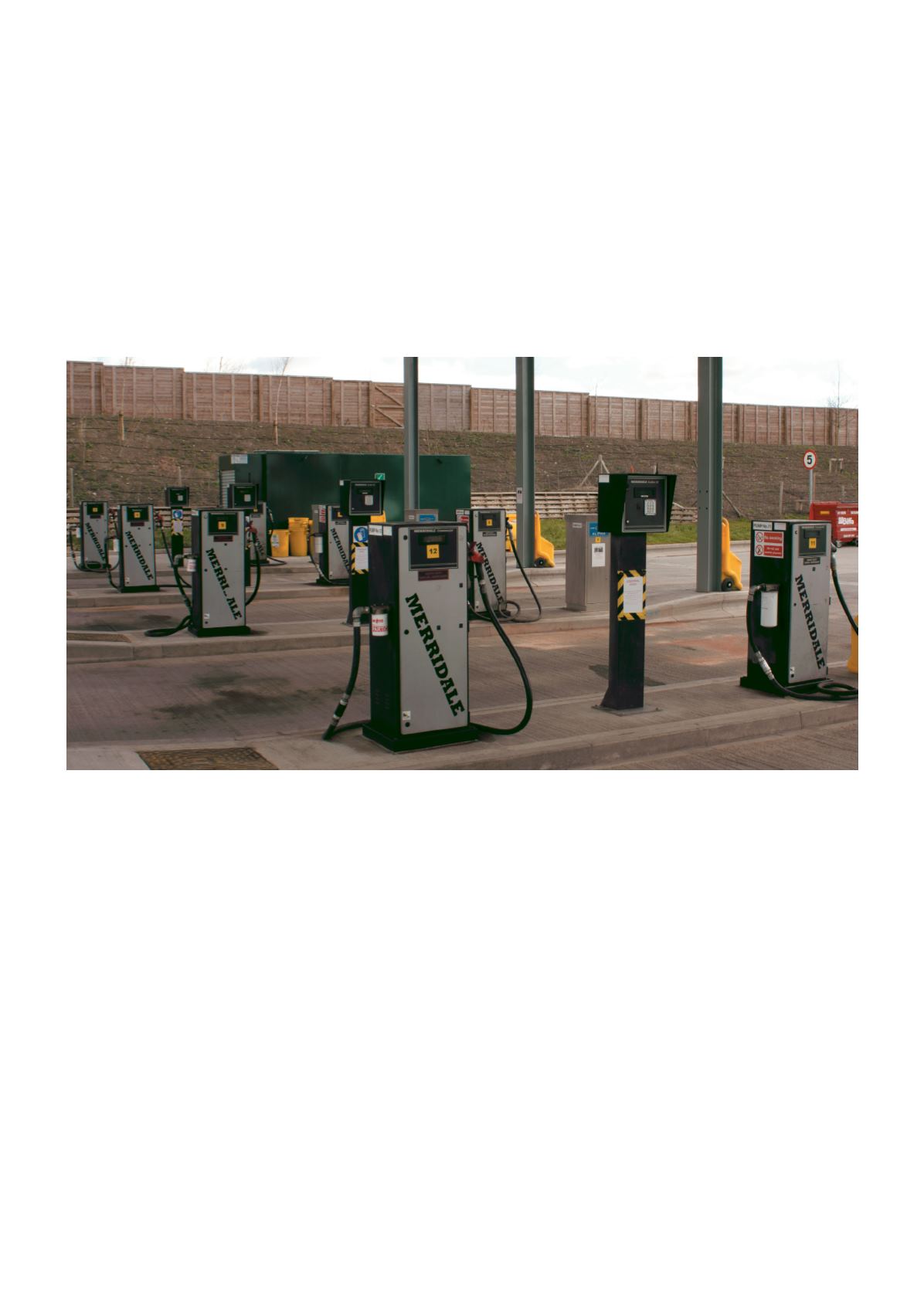
 www.truckandtrack.com
www.truckandtrack.com
Winter 2018
Truck and Track
25
FUEL MANAGEMENT
“Next to wages, fuel consumption is the largest on-cost for all
transport operators,” says Merridale sales director, Stephen
Hannan. “We can all relate to the well-worn management
adage – if you can’t measure it you can’t control it.”
Installing top quality refuelling equipment with all the necessary
stock management tools in place is a good start. But if the fleet
operator is really serious about fuel management, then it is
important to ensure that the facilities are inspected and calibrated
at routine intervals, to ensure continuity and total operational
resilience.
In other words, the implementation of regular inspection and
calibration procedures are imperative, to ensure not only 100%
availability of fuel, but also the accuracy of the data used for cost
accounting and for the management of vehicle performance.
Regular inspection supports the requirements for documentation
for ISO certification and DSEAR operational risk assessments. This
is important to demonstrate that the operators’ depot facilities –
the storage tanks and dispensing facilities, have all been checked
annually. In the event of an insurance claim, the underwriters
will require some form of documentation to assure them that
the installation has been inspected by a qualified third-party
organisation.
Apart from the reassurance of having regular service checks, there
are also more logical benefits in keeping the equipment well-
tuned. Best practice will safeguard against any equipment failure
and the knock-on consequences of having to make alternative
arrangements for fuelling. These situations can also threaten to
cost your reputation for delivering all important customer service.
Accuracy and regular calibration checks are also important to the
monitoring and reporting structures. The purpose of monitoring
is to understand where you stand with fuel usage. The system
needs to be well tuned to be used for measuring a specific vehicle’s
mpg performance. This is important for equipment trials and for
providing the data needed to support driver training, as well as
other statistics concerning the overall use of fuel.
AMerridale systemwill tell you exactly what you have put into your
vehicle tank and how efficiently the fuel is being used. However,
this information is meaningless if the pumps were not calibrated
accurately.
General maintenance checks can also spot potential storage tank
and pipeline issues such as internal (bund) leaks that can only be
detected through accurate instrumentation. Some cases are more
obvious such as worn hoses, failed displays or damaged nozzles.
Other problemsmay be less obvious and are only likely to be spotted
by an experienced service technician.
For more information, or if you would like to arrange for your
installation to be checked by a Merridale service technician, please
call 01902 350 700.
www.merridale.co.ukInspection & calibrationmatters
point at Lichfield, Jamie was more than
happy to see that the Merridale FuelWorks
service had already been implemented.
Jamie Hoole had moved to Wincanton
from a large food distribution group which
also uses the Merridale fuel management
system. Moreover, Jamie had also been
instrumental in making the switch over
from the dial up version to the web-based
service but in this case for his previous
employer. “When I arrived at Lichfield, for
me it was brilliant,” he said. “Because I
was already familiar with Merridale, the
induction training was just a formality, a
quick update on the reporting information
and I was able to crack on – it is so easy and
straightforward to use.”
Fuel usage at Lichfield has not reached a
settled amount as the operation is still in
transition as work transfers across from
Stafford. All the transport department
team managers have been trained to use
the Merridale system. They are logged
in to it all the time, so they can see when
the fuel stock is getting low. Orders for
replenishment can be put through, taking
into account current usage rate and a
delivery lead time of five days, after the
order is placed.
Jamie Hoole continues, “For me, the
upgrade to FuelWorks was a big step
forward. We have complete visibility
of the status of fuel stocks, the fuelling
transactions and current usage rates.
There is no dial-up and everything is clearly
presented on the dash board screen.
“Having a set contract within the
Wincanton group for fuel supplies makes
life a bit easier because we can accept fuel
deliveries at any time in cooperation with
our supplier,” he said.
“From our perspective in transport, costs
are a massive side of things. We will go
after any means of making this more
efficient. When you can physically pinpoint
your actual fuel consumption and see
what each vehicle uses it’s a massive help.
Anything that helps us to manage costs
and manage fuel economy performance
will be important.”



















